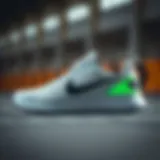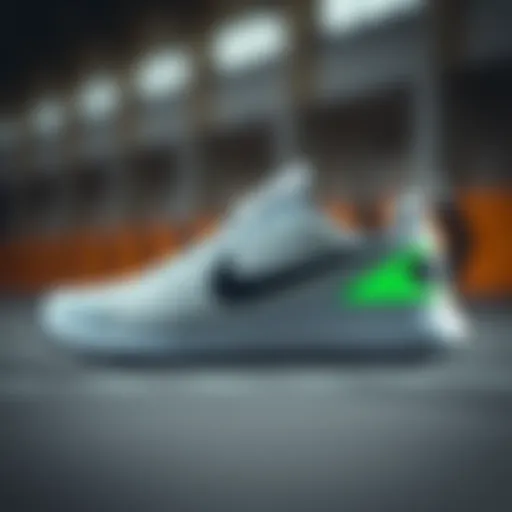The Lint Vacuum Attachment: Your Ultimate Guide
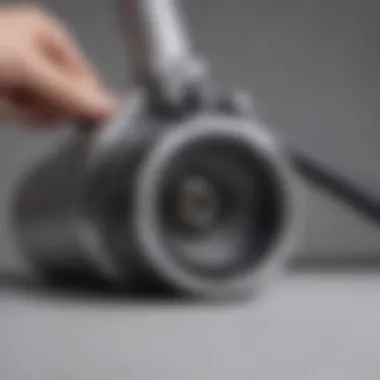

Intro
In the world of fashion and textile care, few tools get as much scrutiny as lint vacuum attachments. They may seem unassuming, but these devices pack a punch when it comes to maintaining the pristine quality of your garments. Lint, while a common nuisance, can throw a wrench in the aesthetics of an outfit, prompting an urgent need for effective removal methods.
The reality is that anybody with a wardrobe full of sweaters, cardigans, or even tailored suits knows the struggle of battling lint. Imagine striding into a room full of confidence only to discover a haze of lint dancing on your sleeves. It’s embarrassing, to say the least. This is where lint vacuum attachments come into play. Not only do they help in keeping your clothes looking immaculate, but they also serve as an insurance policy against the gradual wear and tear that lint can cause.
So why should you care? Well, beyond aesthetics, these attachments provide a bridge between garment preservation and cleanliness, promoting longevity in your favorite pieces. This guide aims to explore the multifaceted nature of lint vacuum attachments. We will scrutinize their functionalities, expose best practices, and delve into the realm of sustainable material care. Whether you are in the industry as a stylist or a designer, or even if you just want your clothes to look their best, this guide offers something valuable for you.
Foreword to Lint Vacuum Attachments
In the realm of garment care, lint vacuum attachments may not always steal the spotlight, yet they play an understated yet significant role. These tools bring a new level of efficiency and precision to maintaining the appearance of our fabrics, transcending basic cleaning techniques. Whether you're a stylist perfecting the look of a clothes rack or a designer striving for a polished collection, understanding lint management can genuinely revolutionize your work.
Understanding Lint and Its Sources
Lint, that feathery nuisance that seems to populate our garments and furniture, stems from a variety of textile sources. Textiles can shed fibers due to wear and tear, washing, or simply friction against other materials. Cotton, for example, tends to unravel, resulting in a tumbleweed effect on your favorite sweater. Wool and synthetic fibers also exhibit this behavior, each with unique characteristics. When fabrics rub against one another or encounter abrasive surfaces, fine particles are released into the environment.
Moreover, the surrounding atmosphere contributes to lint accumulation. Dust and pet hair can mix with those fibers, creating an unsightly mess. Understanding these sources enables one to approach lint management with strategy, targeting not just the output but the origins, enhancing the overall upkeep of fabric items.
The Importance of Lint Management
Lint management is not merely a cosmetic endeavor; it is vital for the longevity of garments. Here’s why it matters:
- Presentation: Lint can tarnish the visual appeal of even the most exquisite designs. A meticulous presentation can make or break the impression on clients and customers.
- Fabric Care: Regular lint removal ensures fabrics maintain their integrity. By preventing buildup, you protect fibers from weakening and enhance their durability.
- Consumer Experience: For retailers, offering a pro-fresh look can create a positive shopping experience. Shoppers are more inclined to purchase a garment that looks pristine—free of lint or pet hair.
"A little care goes a long way. Keeping garments lint-free enhances their value and lifespan."
With the growing trend in sustainable fashion, understanding lint and its management becomes even more pressing. Investing in proper lint vacuum attachments not only addresses cosmetic issues but also aligns with a commitment to preserving resources by extending the life of your textiles.
As we delve deeper into the functionality of these attachments and their many benefits, it will become clear why they deserve a prominent place in any garment care toolkit.
Functionality of Lint Vacuum Attachments
Lint vacuum attachments play a crucial role in maintaining the cleanliness and appearance of garments, especially those made with materials that are prone to lint accumulation. They are designed to swiftly and efficiently remove lint, hair, dust, and other debris from fabrics, contributing significantly to garment care. Understanding the functionality of these attachments is essential for anyone looking to enhance their cleaning regimen or keep their wardrobe in pristine condition.
When selected and used properly, lint vacuum attachments can greatly extend the life of clothing, preserving their texture and color, which is especially important for fashion stylists and designers. With the right tools at hand, users can save time and effort while ensuring that their garments remain free of unsightly lint.
How They Work
Lint vacuum attachments typically utilize a combination of suction power and specially designed brushes to loosen and collect lint and debris from fabrics. When users run the attachment across clothing, the suction pulls the particles into a collection chamber, preventing them from redepositing on the fabric. This process not only cleans effectively but also minimizes the wear and tear that can be caused by other lint removal methods.
Design Features
Design features of lint vacuum attachments greatly influence their effectiveness. Here are some key aspects:
Brush Types
The brushes on these attachments are often designed with various bristle types and lengths to adapt to different fabric textures. For instance, soft bristles may be used on delicate materials like silk or cashmere, while stiffer bristles are more suitable for cotton or wool.
- Key Characteristic: The right brush type can effectively lift lint without damaging the fabric beneath.
- Unique Feature: Many attachments come with interchangeable brushes, addressing the needs of diverse materials. This is a popular choice for fashion aficionados aware of the importance of fabric care.
- Advantages: A versatile brush design minimizes the need for multiple tools, enhancing convenience while ensuring the best cleaning results.
Suction Power
The suction power of a lint vacuum attachment is a critical factor that determines its efficiency. Stronger suction can remove lint more effectively, but there is a balance to be struck. Too strong suction might pull on delicate fabrics or cause stretching.
- Key Characteristic: Adjustable suction settings are often available, allowing users to tailor the power for the specific fabric type they are working with.
- Unique Feature: Some modern units feature sensors that detect fabric type and automatically adjust suction levels. This sophistication enhances usability, making it a beneficial choice for individuals who prefer automation.
- Disadvantages: However, over-reliance on automatic settings can lead to misuse if the user remains unaware of their fabric’s particular needs.
Material Composition
The materials used in the construction of lint vacuum attachments can also impact their durability and performance. From plastics to high-grade rubber, the choices can affect both the weight and maneuverability of the tool.
- Key Characteristic: Lightweight materials may enhance ease of use but may compromise durability. Conversely, heavier, denser materials can withstand rigorous use.
- Unique Feature: Many high-end models utilize composite materials that balance weight and strength, making them ideal for frequent use. This specific choice often appeals to professionals in fashion and design, who require robust yet effective tools.
- Advantages: The longevity of these materials ensures that users get the most out of their investment, giving them greater value for their money.
"Lint vacuum attachments are not just tools; they are essential partners in preserving the beauty and longevity of our favorite garments."
In summary, the functionality of lint vacuum attachments hinges on their design elements, including brush types, suction power, and material composition. Each factor contributes to their overall ability to maintain fabric integrity while effectively managing lint buildup. Understanding these details enhances the user's capacity to select the proper attachment for their needs.
Benefits of Using Lint Vacuum Attachments
The discussion surrounding lint vacuum attachments isn't just about their existence; it's crucial to understand how they stand apart in the world of garment care. Several key elements highlight their importance, particularly in maintaining clothing aesthetics and performance. With the right tools at hand, managing lint becomes far less of a chore, making these attachments indispensable for fashion-conscious individuals.
Effectiveness in Lint Removal
When it comes to tackling lint, one of the most enticing attributes of lint vacuum attachments is their effectiveness. Unlike traditional methods—that often require elbow grease and time—a vacuum attachment swoops in with a swift, efficient sweep. The suction power pulls lint from deep within the fabric fibers, a feat many manual tools struggle to achieve.
Imagine a wool sweater covered in lint from a cotton couch. A sticky roller might make a dent, but it would leave behind stubborn bits nestled in the weave. In contrast, a vacuum attachment targets these hard-to-reach areas, ensuring comprehensive removal. Therefore, for those whose day-to-day lives involve various fabric blends, investing in a quality lint vacuum attachment pays off in the sheer effectiveness of its performance.
Time Efficiency
In our fast-paced world, time is often a luxury. The straightforward nature of using lint vacuum attachments means efficiency ranks high on the list of benefits. A well-designed attachment can trim down a lint-cleaning session significantly. For instance, one might spend several minutes picking lint off a coat with a brush. Rectifying a similar situation with a vacuum attachment? That could take a mere instant.
Having a lint vacuum attachment handy also means you can clean on the go, whether you’re getting ready for a night out or preparing for a client meeting. It's about having that seamless transition between tasks without letting lint dictate your schedule. For professionals—stylists, designers, or marketers—saving those minutes enables them to focus on the tasks that truly matter.
Garment Preservation
The preservation of garments is a nuanced subject; it’s about more than just aesthetics. Using the right tool can profoundly impact the longevity of your wardrobe. Here’s where lint vacuum attachments shine brightly, as they not only remove lint but also minimize damage to delicate fibers.
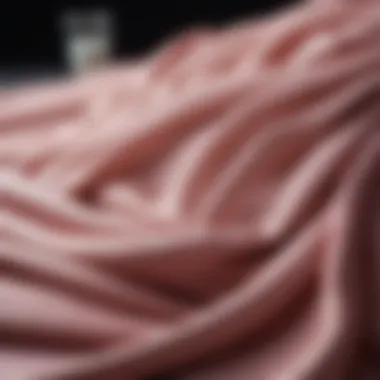

Regularly vacuuming garments can reduce wear and tear. Some may think that brushing is gentle enough, but the friction can, over time, cause pilling or break down fibers. Vacuum attachments provide a non-invasive way to care for clothing without subjecting them to abrasive movements. In essence, proper utilization of these attachments translates to garments that last longer, maintaining their original allure.
"A stitch in time saves nine, but a quick vacuum removes lint without a hassle."
Choosing lint vacuum attachments means more than just fighting against fuzz balls; it's a holistic approach to garment care. You ensure garments look fresh, save valuable time, and extend the life of your wardrobe—all critical considerations, especially for those who consider clothing an important aspect of their identity. By investing in this technology, you reinforce the connection between style and sustainability.
Comparison with Other Lint Removal Methods
When it comes to maintaining the appearance of garments, understanding the various options available for lint removal is crucial. Lint vacuum attachments stand as a specialized tool designed to tackle the job effectively, but they are not the only players in the game. In this section, we explore the strengths and limitations of three other common lint removal methods: sticky rollers, lint brushes, and fabric shavers. This comparison is important because it allows consumers to make informed decisions based on their specific needs and preferences.
Sticky Rollers
Sticky rollers are deceptively simple in design, typically featuring a handle attached to a roll of adhesive material. They effectively pick up lint, dust, hair, and other debris from fabrics, making them a popular choice for quick touch-ups.
Pros:
- Convenience: Easy to carry, they fit in a handbag or jacket pocket, making them a go-to for on-the-go lint control.
- No Power Needed: No need for batteries or charging; just pull, press, and roll.
- Cost-Effective: Generally inexpensive to purchase and replace.
Cons:
- Limited Lifespan: Once the sticky surface is full, you must replace the roller.
- Waste Generation: Disposing of used rollers contributes to environmental waste.
- Ineffective on Heavier Fabrics: Might struggle with thicker materials, sometimes requiring multiple rolls for complete coverage.
Lint Brushes
Lint brushes operate on a manual system, typically featuring bristles designed to capture and lift lint off surfaces without the use of adhesive or suction. They are generally made from materials such as nylon or rubber, adding durability to the design.
Pros:
- Reusable: Can be cleaned easily, providing an eco-friendly alternative.
- Versatile: Suitable for a wide range of fabrics, including heavier ones.
- Gentle on Garments: Less risk of damage to delicate fabrics compared to harsher methods.
Cons:
- Labor Intensive: Requires the user to actively brush the fabric, which might take longer than vacuuming.
- Less Effective on Pet Hair: Struggles to lift stubborn pet hair that may cling tightly to fabrics.
Fabric Shavers
Fabric shavers, often equipped with blades, trim away lint and fuzz balls from clothing by slicing them away. These devices can be electric or manual, designed to restore the smooth look of fabrics.
Pros:
- Deep Cleaning: Removes embedded lint and pilling, refreshing the look of garments significantly.
- Durability: A one-time investment that can significantly extend the life of favorite clothing items.
- Versatility: Can often be used on different fabric types, bringing older garments back to life.
Cons:
- Potential for Damage: Improper use can lead to fabric cutting, risking garment integrity.
- Power Dependency: Electric models require a source of power, which can limit where they can be used.
In summary, while lint vacuum attachments are specialized for effective and thorough lint removal, understanding the nuances of alternative methods like sticky rollers, lint brushes, and fabric shavers can help users choose the right tool for their needs. Each method has its own pros and cons, catering to different situations and preferences.
Materials Most Affected by Lint
When it comes to managing lint, it’s crucial to understand which materials are most susceptible to it. Different fabrics behave in various ways, and knowing how lint interacts with each can help in selecting the right tools for cleaning. In this section, we will explore the types of fabrics that typically attract lint and discuss the causes behind its pesky buildup.
Types of Fabrics Prone to Lint
Cotton
Cotton is one of the most commonly used fabrics in our everyday lives. It's soft, breathable, and comfortable to wear. However, it is also notorious for attracting lint. The fibers in cotton are short and can break loose, leading to lint clusters on your garments. It's a beneficial choice because it's easy to care for and can withstand frequent washing. However, its proclivity for picking up lint means that using a lint vacuum attachment is almost essential for keeping cotton clothes looking fresh.
Key Characteristics:
- Softness and breathability make it a favorite.
- Natural fiber that can be hypoallergenic.
Advantages:
- Versatile for clothing and home textiles.
- Durable and easy to clean.
Disadvantages:
- Lint can accumulate quickly, requiring regular maintenance.
Wool
Wool is another fabric that presents its own set of challenges with lint. It is favored for its warmth and insulating properties, making it a popular choice for winter clothing. However, wool fibers can shed easily, leading to lint that can cling to both the garment and other fabrics. Its unique texture tends to trap lint in its coils.
Key Characteristics:
- Naturally insulating and breathable.
- Offers a natural resistance to dirt and odors.
Advantages:
- Great for colder climates, providing warmth without bulk.
- Naturally resists wrinkling and retains shape.
Disadvantages:
- The fibers can create pilling and hold onto lint, making maintenance important.


Synthetic Fibers
Synthetic fibers such as polyester and nylon are widely used due to their unprecedented durability and stain resistance. While they stand up well against the ravages of wear and tear, they are also magnetic when it comes to lint, often attracting particles more than natural fibers. The smooth surface of synthetic fabrics allows lint to easily stick, requiring regular cleaning with a lint vacuum attachment to maintain their appearance.
Key Characteristics:
- Strong and resilient, capable of withstanding high levels of stress.
- Often lightweight and easy to dry, making them versatile for all seasons.
Advantages:
- Cost-effective and widely available.
- Less prone to fading and shrinking compared to natural fibers.
Disadvantages:
- Can build up static electricity, which attracts lint and hair even more.
Causes of Lint Buildup
Understanding the causes behind lint buildup can significantly aid in formulating effective cleaning strategies. Several factors contribute to this irritation:
- Washing Methods: Some washing cycles induce more friction, thus creating higher levels of lint.
- Drying Processes: Using high heat in drying machines can lead to fiber breakdown and additional lint.
- Fabric Blend: Blended fabrics can exacerbate lint issues, particularly when mixed with cotton.
- Static Electricity: Fibers that generate static cling are more susceptible to accumulating lint from surrounding fabrics.
Tips for Effective Use
Utilizing a lint vacuum attachment effectively can significantly elevate your garment care routine. It’s not just about having the right tools; it’s about knowing how to leverage them to their fullest potential. This section covers essential tips that will help maximize the performance of your lint vacuum attachments, providing benefits that go beyond mere cleanliness.
Choosing the Right Attachment
When it comes to selecting an attachment, it might feel overwhelming due to the myriad of options available. There are specialized attachments designed specifically for various garment types and fabrics. For instance, a larger brush might work wonders on fluffy fabrics like fleece, while a fine brush could snag impurities on smoother textiles.
- Consider Fabric Type: Different materials demand distinct approaches. Carefully match the attachment to your garment’s fabric. Cotton shirts might fare well with a soft-bristled attachment, while wool coats might need a slightly firmer touch.
- Attachment Size Matters: Larger attachments cover more ground quickly, but precision is sacrificed. In contrast, smaller ones can reach into the crevices but take up more time. Balance your choice based on the task at hand.
- Compatibility with Vacuums: Not every attachment fits every vacuum. Always double-check compatibility, as an attachment that doesn’t fit can lead to frustration and ineffective cleaning.
Cleaning Techniques
Effective cleaning techniques can make or break your lint management routine. Applying the proper methods not only extends the life of your garments but also ensures optimal performance from your vacuum attachments. Here are a few recommendations:
- Techniques for Different Fabrics: For delicate fabrics, like silks or lace, use a lighter touch. Placing the attachment too firmly can pull fibers, causing damage. Conversely, sturdier fabrics like denim can handle a firmer sweep.
- Work in Sections: Avoid overwhelming yourself by cleaning in smaller sections. This ensures that you tackle everything without missing spots. It also adds a layer of care; you can observe the results methodically.
- Regular Maintenance of Attachments: Just as garments require care, so do your attachments. Regularly clean your lint vacuum attachments to avoid clogs and ensure the lasting suction power is at its peak.
"A clean attachment can make lint disappear as if it were never there."
Storage Recommendations
Once your cleaning session is complete, there's still one last step that shouldn't be overlooked: proper storage of your lint vacuum attachments. Improper storage can lead to scratches or damage over time.
- Avoid Crowded Spaces: Store your attachments in a cool, dry place where they won't be at risk of damage from heavy or sharp objects. Maybe consider a specific drawer or tote just for your cleaning tools.
- Use Protective Covers: If available, use protective covers designed for lint vacuum attachments to safeguard them against dust, dirt, or potential scrapes.
- Designate a Cleaning Station: Establishing a specific area where you keep your lint vacuum and its attachments can streamline your cleaning routine and ensure easy access.
By employing these tips, users can make significant strides in maintaining their garments while optimizing their lint vacuum's efficiency. With the right technical knowledge and care, managing lint becomes less of a chore and more of a routine that seamlessly fits into an overall smart garment care strategy.
Innovations in Lint Vacuum Attachments
In the realm of garment care, innovations in lint vacuum attachments have sparked a significant transformation. The integration of these advanced features in lint management tools reflects a growing understanding of consumer needs and the importance of efficiency in our fast-paced lives. This section delves into two crucial areas of innovation: Smart Technology Integration and Eco-Friendly Alternatives. These developments are not merely for show; they carry weighty benefits that can substantially influence how we deal with lint within our daily routines.
Smart Technology Integration
The advent of smart technology has seeped into every corner of our lives, and lint vacuum attachments are no exception. Smart features in these devices range from connectivity options, such as Wi-Fi and Bluetooth, to advanced sensors that detect fabric types and select appropriate suction levels automatically. Imagine a scenario where a vacuum attachment adjusts its intensity based on the delicate cashmere of a favorite sweater versus a sturdy denim shirt. This level of intuitive design ensures fabric safety while taking the chore out of cleaning.
Benefits of Smart Integration:
- User-Friendly Experience: Many of these attachments come with mobile applications that provide usage tips, maintenance reminders, and real-time performance monitoring.
- Enhanced Performance: The digital capabilities lead to more efficient lint removal, reducing the time and effort it takes to achieve spotless garments.
- Data Tracking: Some attachments can collect data on usage habits, offering insights into when and how frequently certain tasks are performed. This can guide users in improving their garment care routines.
Yet, there are considerations surrounding these smart devices. Not all users are comfortable with technology integration, which might limit their market reach. Concerns regarding battery life and the durability of these multifunction attachments also arise, as the balance between innovation and longevity remains crucial for mass adoption.
Eco-Friendly Alternatives
As consumers become more environmentally conscious, the demand for eco-friendly alternatives in lint vacuum attachments has surged. Manufacturers are now focusing on sustainable materials for their products. Examples include biodegradable plastics or even components made from recycled materials. This shift not only addresses environmental concerns but also appeals to a more discerning consumer base seeking to make responsible choices.
- Sustainable Materials: The utilization of materials that reduce the carbon footprint is gaining traction. For example, bamboo bristles and natural fiber brushes are beginning to replace synthetic options, another simple step in reducing our overall environmental impact.
- Energy Efficiency: Many modern attachments are designed to use less power while still providing robust performance. This not only saves on electricity bills but also aligns with the global movement toward reducing energy consumption.
- Waste Reduction: Innovations in design, such as detachable and washable filters, can significantly reduce waste compared to traditional single-use lint removal methods.
Integrating eco-friendly features not only positions brands favorably in the eyes of a growing market segment but also contributes positively to the planet. Nevertheless, the challenge remains in ensuring these alternatives do not compromise on performance or user satisfaction.
"Being green isn't about buying a new product or the latest gadget; it's about changing what we need in our lives."
Sustainable Practices in Lint Management
In today's world, where the fashion industry faces scrutiny over its environmental footprint, embracing sustainable practices in lint management is crucial. Not only does effective lint management aid in garment preservation, but it also lends itself to broader ecological benefits. Adopting sustainable methods can, in fact, contribute to a reduction in waste and resource consumption associated with clothing upkeep.
Material Recycling
One of the most significant elements of sustainable practices is recognizing the potential for material recycling. Fabrics harboring excess lint can often be repurposed rather than discarded. Items like cotton, wool, and synthetics have varied life cycles and can end up in landfills if not handled properly. When recycling these materials, it’s essential to identify local resources that can process them.
For instance, many clothing brands are now implementing take-back programs where consumers can return used garments, thus fostering a circular economy.
- Clothing Banks: Many organizations accept textile donations, helping to ensure that materials are recycled effectively.
- Upcycling Initiatives: Consider creative ways to repurpose lint-affected fabrics into new items, like tote bags or patches, which not only upcycle materials but also add to sustainability.
By showing awareness towards these aspects, consumers and industry professionals alike can contribute positively to the environment.
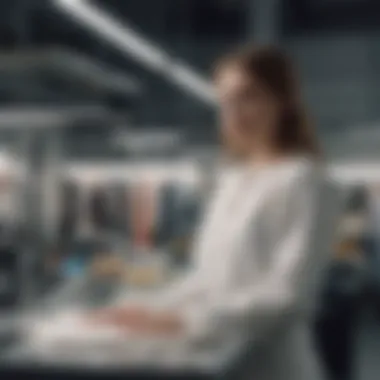

Reducing Environmental Impact
Lint management isn't just about cleaning; it also bears implications for our planet. Reducing the environmental impact of lint vacuum attachments involves, among others, mindful usage and choice of products. For example, selecting attachments made from renewable materials can significantly lessen one's carbon footprint.
Furthermore, practicing efficient laundry habits can minimize lint production:
- Wash Less Frequently: Instead of tossing clothes in the washing machine after a single wear, consider wearing them multiple times, thereby reducing the number of cycles.
- Cold Washing: Using cold water for washing garments not only saves energy but also decreases lint generation, as hot water tends to loosen fibers.
- Air Drying: Whenever possible, air drying clothes instead of using a dryer can help cut down energy use and prevent further lint creation.
"Every small step taken towards sustainable practices is a giant leap for the planet's future."
Ultimately, integrating these sustainable practices in lint management aligns with broader environmental goals, benefiting both garment care and the ecological system as a whole. As stylists, designers, and marketers, understanding how to weave sustainability into lint management can enhance a brand's reputation and appeal in an increasingly eco-conscious market.
Settings for Optimal Use
When it comes to lint vacuum attachments, understanding the right settings for use can significantly impact their effectiveness. Whether at home or in a retail environment, adapting the settings according to the space and requirements ensures a thorough cleanse of lint and fuzz.
Customized settings allow for varying suction power and brush engagement, enhancing the device's capability across different fabrics and scenarios. It’s not just about having the right tool; it’s about using it effectively. Good utilization translates directly to garment care, preservation, and in some cases, can even prolong the life of those beloved pieces in your wardrobe.
At Home
In a domestic setting, the use of lint vacuum attachments can be a game-changer. For those with kids or pets, lint can be a constant companion on your clothing and furniture. The settings should be tailored to the fabric type and the area of application.
- Adjustable Suction Power: It's wise to select a lower suction setting for delicate fabrics like silk or lace. Meanwhile, stiffer fabrics can handle a stronger suction, delivering optimal lint removal without damaging the material.
- Brush Type Selection: Depending on what you're vacuuming, the brush type should also vary. For example, a soft brush works wonders on fine materials, while tougher bristles handle more rugged fabrics, such as denim.
- Frequency of Cleaning: For daily wear items, a quick pass with a lower suction might suffice. However, if you're prepping an outfit for a special occasion, a thorough clean on a higher setting ensures that lint doesn’t steal the spotlight.
Effective practicalities matter at home, especially when juggling the lives of family members or roommates. Therefore, using lint vacuum attachments could transform a mundane task into an efficient routine.
In Retail Environments
When employed in retail spaces, particularly in clothing outlets, settings for lint vacuum attachments take on an entirely different nuance. Here, the stakes are higher as the aim is not just cleaning lint but also enhancing the overall customer experience.
- Commercial Suction Levels: Retail attachments often need higher suction settings to deal with lint accumulation from frequent garment handling. The last thing you want is potential customers distracted by unsightly lint on display items.
- Specialized Settings for Seasonal Influx: During seasons where fabrics like wool and cashmere are prevalent, having preset configurations can help streamline the cleaning process. Staff can quickly switch settings depending on the new arrivals, ensuring each garment is ready and pristine for viewing.
- Staff Training: It’s crucial for store staff to be trained on optimal settings to ensure they are utilized effectively. Knowing when to use higher suction or opting for a specific brush type can mean the difference between a clean garment and one that looks unkempt on the rack.
Proper training in utilizing these attachments not only keeps the inventory looking sharp but also enhances customer satisfaction, translating into better sales.
Challenges with Lint Vacuum Attachments
The advent of lint vacuum attachments has offered consumers a more efficient way to tackle the pesky issue of lint accumulation. However, like any tool, these attachments come with their challenges. Understanding the hurdles users might face is paramount for achieving optimal results and maintaining satisfaction with the product. This not only enriches our knowledge about lint management but also enhances the overall experience of using these attachments in both home and professional settings.
Common Issues Encountered
While lint vacuum attachments are undeniably helpful, users often run into a few common problems:
- Clogging: A frequent headache is clogging caused by excessive lint buildup in the nozzle or hose. It can stall operations and necessitate thorough cleaning between uses. Ensuring regular checks can prevent this nuisance.
- Compatibility Concerns: Not all attachments fit every vacuum model, which can be a source of frustration. It's crucial for consumers to verify compatibility before making a purchase. If not, the attachment might end up as a paperweight.
- Inefficient Performance: Sometimes, attachments may fail to deliver the expected results. This can stem from insufficient suction power or a design that doesn't cater well to certain fabric types. Knowing which attachment suits your needs helps mitigate inefficiencies.
- Durability Issues: Some users report that certain models don’t hold up over time, leading to broken components or diminished effectiveness. Checking reviews before buying can save a lot of headaches later.
Each of these issues, while common, can be effectively managed with a bit of diligence and foresight.
Maintenance Requirements
Keeping your lint vacuum attachment in good shape is crucial for prolonging its life and functionality. Here are some maintenance practices that might come in handy:
- Regular Cleaning: Post-use cleaning is non-negotiable. A simple rinse of the brushes and a wipe down of the nozzle keeps lint from becoming a built-up problem.
- Check for Wear and Tear: Inspect components periodically for any signs of wear like cracks or frays, which can compromise efficacy. If something looks off, it's likely time for a replacement.
- Suction Power Maintenance: If you notice the suction dwindling, check for blockages in the hose or filters. This simple act could rejuvenate your attachment's performance.
- Follow Manufacturer Guidelines: Adhering to the specific care instructions provided by the manufacturer is always a smart move. They know their product best and can offer tailored advice for keeping it operational.
By being proactive about maintenance, users can greatly enhance their lint vacuum attachments' longevity and effectiveness, ensuring that they continue to function as intended.
Consumer Perspectives
Understanding consumer perspectives on lint vacuum attachments is crucial for anyone involved in the fashion and cleaning industry. These insights provide a glimpse into real-world applications and decision-making processes that can guide future product developments as well as marketing strategies. When potential buyers look for a solution to the age-old problem of lint buildup, their experiences, both positive and negative, greatly influence subsequent choices.
User Reviews and Experiences
User reviews can tell a compelling story about the efficacy of lint vacuum attachments. Customers often share their personal trials—be it how many times they’ve battled to restore their favorite sweater’s original look or the frustrations faced when the attachment failed to perform as expected. According to a survey conducted on Reddit, many users highlighted the satisfaction felt when a lint vacuum attachment drastically reduced their cleaning time.
- Pros: Many users are quick to point out the effectiveness in removing lint from various fabrics. They often mention that their garment’s life extended after regular use of these attachments. Positive reviews shimmer with phrases like "life-saver" and "must-have gadget."
- Cons: However, it’s not all roses. Some shared their disappointment, particularly with attachments that lack strong suction power or are incompatible with certain vacuum models. Frequent mentions of durability issues create a cautionary tale for potential buyers looking for longevity in their products.
User experiences not only spotlight the triumphs but also the quirks associated with each product, whether it’s a design flaw or a user-error situation. The range of feedback paints a fuller picture for retailers and manufacturers, fueling product improvements.
Expert Opinions
Experts often weigh in on the landscape of lint vacuum attachments, providing depth that consumer perspectives alone might not deliver. Stylists and industry insiders note that these attachments can transform the way consumers maintain clothing. Their insights hang on a few core themes:
- Innovation: Many experts underscore advancements in technology, such as built-in sensors that adjust suction based on fabric type. Such advancements can increase effectiveness and prevent damage to delicate fabrics.
- Sustainability: A growing concern among professionals is sustainability. Experts advocate for the use of eco-friendly materials in the production of lint vacuum attachments.
- Advice: Furthermore, expert opinion shapes consumer behavior. Professional cleaners often recommend specific brands known for high-quality performance, like the Bissell Pet Hair Eraser and the Shark UltraCyclone, guiding users to make informed choices.
"Understanding both consumer feedback and expert guidance creates a comprehensive viewpoint that informs purchasing decisions and product innovations in the lint removal market."
By blending these insights, buyers not only acquire effective tools for lint management but discover opportunities to enhance their wardrobe care routines. The combined narratives of everyday users and professionals provide a balanced and thorough understanding, bolstering the article’s premise that lint vacuum attachments are more than just practical tools—they are integral to garment care.
End
In today's fast-paced world, managing lint effectively is a matter that resonates with many, from busy parents to fashion enthusiasts. The topic of lint vacuum attachments encapsulates a valuable discussion on how to maintain one’s clothing, ensuring garments remain in optimal condition. A well-chosen lint vacuum attachment streamlines the process of removing lint, pet hair, and other pesky debris, leading to better garment longevity and tidiness.
Summary of Key Points
- Understanding Lint Vacuum Attachments: These tools are more than just gadgets; they are essential for maintaining fabric integrity. Knowing how they function reveals their significance in regular cleaning routines.
- Benefits of Effective Lint Management: The proper removal of lint not only improves the appearance of clothing but also helps in prolonging the lifespan of fabrics, saving money in the long run.
- Comparative Advantage: Compared to traditional methods like sticky rollers and lint brushes, lint vacuum attachments offer superior suction power and efficiency.
- Innovations and Sustainability: Future developments in this area promise smarter, more eco-friendly options, leading to enhanced user experiences and reduced environmental footprints.
The Future of Lint Management Tools
As the textile industry embraces technological advancements, lint vacuum attachments might see a transformative shift. Features we might expect in the future include:
- Smart Technology Integration: Imagine attachments that not only clean but also analyze fabric types to adjust suction capabilities.
- Enhanced Eco-Friendliness: Environmental considerations could spur the emergence of biodegradable materials in attachements, minimizing waste.
- User-Centric Designs: As user feedback shapes product development, we may see more intuitive, ergonomic designs catering specifically to user preferences.
The evolution of lint management reflects broader trends in sustainability and efficiency. Users can look forward to tools that not only enhance their cleaning routines but also carry a commitment to the planet. Therefore, taking care of lint today might very well lead into a smarter, cleaner future.














